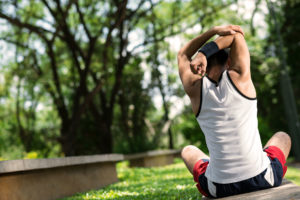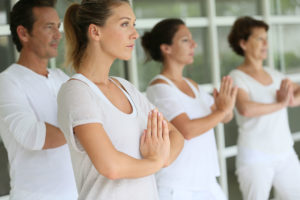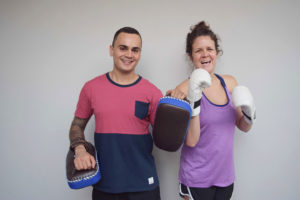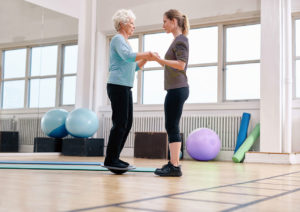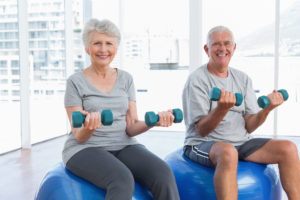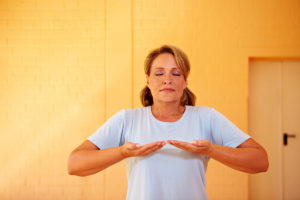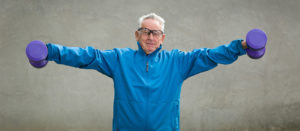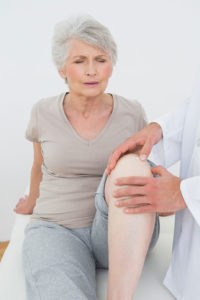Corrective Exercise
Profiles of Pain and Perseverance
In February 2006, Danny Strong was on top of the world. After years of working as a gym manager, he had opened his own personal training gym, making his dream a reality. The husband and father was also eager to welcome a second child into the family. A month after receiving the keys to his new facility, he took his family on a trip to visit his godmother. While on the road, Strong lost control of his vehicle and was hit by a tractor-trailer traveling at full speed. His pregnant wife, Sandra Urbano Strong, was killed instantly.
The Science of Suspension Exercise
Suspension exercise combines body weight and anchored, seatbelt-like straps to provide an alternative to free weights and machines. The question on a lot of trainers’s minds is whether these strap-based training systems work as well as more traditional resistance training tools. Though research into this question has been somewhat sparse, studies are starting to paint a picture of effective ways to integrate suspension exercise into a workout program.
Stretching For Men
Many men struggle with inflexibility and diminished joint range of motion, especially as they age. Hip tightness, for example, can hinder athletic performance and possibly lead to various injuries. Unfortunately, stretching often takes a back seat to cardiovascular and strength training.
How to Be an Empathetic Personal Trainer
New beginnings. When Patty Shoaf first met Barbara 19 years ago,
she realized quickly that this would be a client like no other. “I
arrived for a consult at her house and a classy, high-heeled,
67-year-old woman wearing a skirt walked in,” Shoaf recalls.
Five Benefits of Eccentric Exercise
Not everyone likes to focus on eccentric contractions, but this style of training deserves more attention because it may be a “secret weapon” for creating healthier joints and a long, lean body. Research reveals the perks for newcomers and well-trained athletes.
Self Myofascial Release for Seniors
Did you know it’s important to take care of the fascia—or connective tissue—in your body? The health of connective tissue is a serious concern for older people, as movement restrictions can make it hard for them to perform simple activities of daily living. The condition of our connective tissue depends on two factors—how old we are and what we have done in our lives to keep our tissue healthy, hydrated and flexible.
Activity Requirements for Adults With Limited Mobility
While much of the population is physically able to meet the accepted exercise recommendations for improving health, many people are not. Research from the University Institute on Aging, at the University of Florida, Gainesville, indicates that even modest amounts of activity can prove beneficial for those with physical limitations.
Powerful Postures to Melt Stress
In today’s complicated world, just listening to the evening news on television or radio can raise cortisol rates in the body. High stress levels, combined with current technological advancements, almost unending sensorial bombardment, and the ever-changing dietary habits of many developed countries, can deny the body time for repose and resynthesis.
A Back-Pain Solution
Starting with the basics. Personal trainer Jamal Younis first met 38-year-old Jessica in August 2014. Jessica, a former competitive collegiate swimmer, suffered from a degenerative disk disease, which had resulted in three surgeries to address the issue. Post physical therapy, she decided that in order to keep her back healthy she’d need to continue with a structured training program. She met Younis through a friend of his who was also a personal trainer.
Work-Related Training: Computer Workstation Setup
Fitness professionals strive to help clients enhance their health and reduce the risk of injury; however, they may be missing a large piece of the training puzzle if they aren’t addressing a client’s work-related training needs.
Fall Prevention Training for Seniors
It appears there is a growing need for seniors to engage in fall prevention. A recent report found a significant increase in falls from 1998 to 2010.
Researchers looked at data from the Health and Retirement Study, which is an interview-based report. Among individuals aged 65 and older, the percentage who had experienced at least one fall in the 2 years prior to the interview rose from 28.2% to 36.3%—a relative increase of close to 30%. The researchers were surprised to learn that the increase was most marked among the younger people studied (those closer to 65).
Physical Considerations for Training Older Seniors
The market for older seniors (70 and over) is growing thanks to the aging of the Baby Boomers. By 2050, 1 in 5 Americans (21%) will be 85 or older— up from roughly 14% in 2010 (Vincent & Velkoff 2010).
Posture Tips for Clients
We asked trainers the question: “What Is The Most Effective Posture Tip You Give Clients?” Here is a sampling of the answers we received.
10 Ways to Prevent or Combat Overtraining in a Client
A client who develops overtraining syndrome needs to return to a healthy state as fast as possible. While there is no magic cure for overtraining, these 10 preventive strategies for nonfunctional overreaching and overtraining syndrome, from Kreher and Schwartz (2012), should prove helpful:
Excessive Thoracic Kyphosis: More Than Just Bad Posture
Excessive thoracic kyphosis (ETK) is a disproportionate forward rounding or curvature of the middle and upper back, also known as the thoracic spine (Kendall, McCreary & Provance 2005). ETK is an extremely common musculoskeletal imbalance brought on by prolonged time in some postural positions; exercise and/or activity choices; environmental factors; myofascial dysfunction; intolerances to food and/or other allergic reactions; and psychological stress.
“What is the most effective posture tip you give clients?”
This is the tip I give clients: Picture a string pulling your head up toward the ceiling. This helps to create space between the vertebrae; when you relax, the spinal segments can then realign.
My favorite way to teach proper pos- ture is to have people close their eyes and slowly tip their spine forward and back and side to side to find their true “good posture.”
Everyone’s spine is slightly different, and mirrors can only get us so far. Real posture is found within each person through body awareness.
Rehabilitation Breakthroughs With Eccentric Training
A recent special edition of the Journal of Applied Physiology focused on eccentric training, best defined as using active force to produce muscle tension while the muscle is lengthening.
How to Train Clients for the Workplace
Fitness professionals strive to help clients enhance their health and reduce the risk of injury; however, they may be missing a large piece of the training puzzle if they aren’t addressing a client’s work-related training needs. While most clients may not be professional athletes, they are in fact “occupational ath- letes,” meaning they spend 40 or more hours a week on the job.
Prehabilitation Strengthening Exercises for Knee and Hip Arthroplasty
Fitness professionals may work in concert with a physical therapist to encourage a client to engage in “prehab” to maintain or enhance his strength preoperatively for knee or hip arthroplasty. (Shakoor et al. 2010). Pain is often a limiting factor, and it may be difficult for the client to participate in even the most basic daily activities. Below are a few suggested exercises.
KNEE ARTHROPLASTY
Isometric quadriceps sets. Lie on back with legs extended. Tighten quads and push knee into mat/surface. Hold 10 seconds. Do 10 repetitions, 5 times per day.
Total Joint Replacement: Knee and Hip
Mr. Brown is a 68-year-old retired postal worker who stays active with golf and tennis, but he complains of severe pain and swelling in his left knee, which he cannot straighten completely. The pain limits his ability to do the things he loves, but he is otherwise comfortable during daily activities. Based on X-rays and a clinical exam, Mr. Brown has symptomatic knee osteoarthritis.
- « Previous
- 1
- 2
- 3
- 4
- Next »


